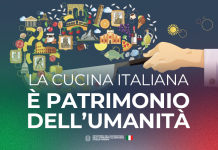The Food sector in Italy is growing rapidly, from different points of view.
First of all, there was an export boom. In fact, Italian-made food has a new record in international markets: in the first six months of the year, our food and beverage export grew by 6.9%, to 35.3 billion (2% of GDP) the value, on an annual basis, of our food sales abroad.

Despite the questions on duties between US, EU and China, and Brexit, 2019 seems to have started in a good way.
The first export market is Germany (+ 1.6%) followed by France (+ 4.3%), the United States (+ 4%) and the United Kingdom (+ 1.6%).
Furthermore, consumers are increasingly eco-friendly and are looking for organic products. Sales of organic products in 2018 exceeded 4 billion euros. Made in Italy organic exports exceeded 2.2 billion euros (first in the EU, second in the world after the US). Last year, again, 86% of Italians bought an organic product at least once a year, while 51% said they eat organic food at least once a week.

Italy is also a global leader in terms of number of companies that process organic products (18,000 companies, 3,000 more than France and Germany) and is at the European top for the number of organic farms (75,000).
Different data show that consumers are increasingly looking for healthy and sustainable alternatives: 49% of consumers choose products / brands that pay attention to sustainability; 37% research products with eco-friendly packaging; 41% declared to avoid the use of plastic as much as possible; 44% of consumers are attentive to the origin and transparency of the supply chain and want to know if the product was produced ethically.
Finally, the impact of food delivery and consumption habits is equally strong. A sector of 566 million euros and a growth of + 56% compared to 2018. In recent years, there have been many operators in the sector who invested to activate the service in new cities and to strengthen the available offer. Today 93% of Italian cities with populations exceeding 50 thousand inhabitants are covered by home delivery services (it was only 74% in 2017). About one inhabitant out of two (47%) can order ready meals online, while in 2017 this service was only accessible to one third of the Italian population.
Consumption changes and also the ways of shopping: online, click & collect in store, drive-in, subscription formulas, meal-kit services.
So, encouraging data.









































